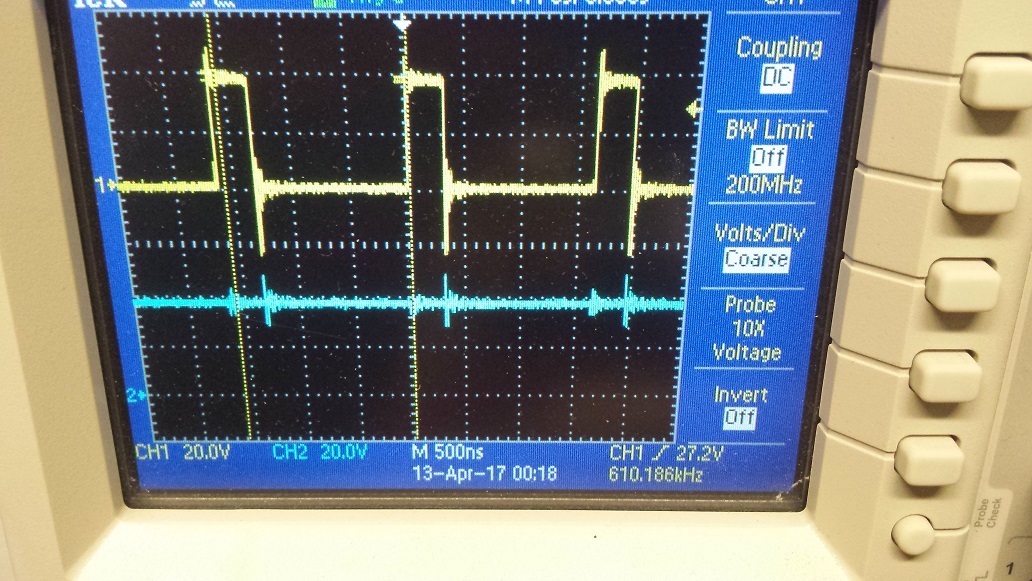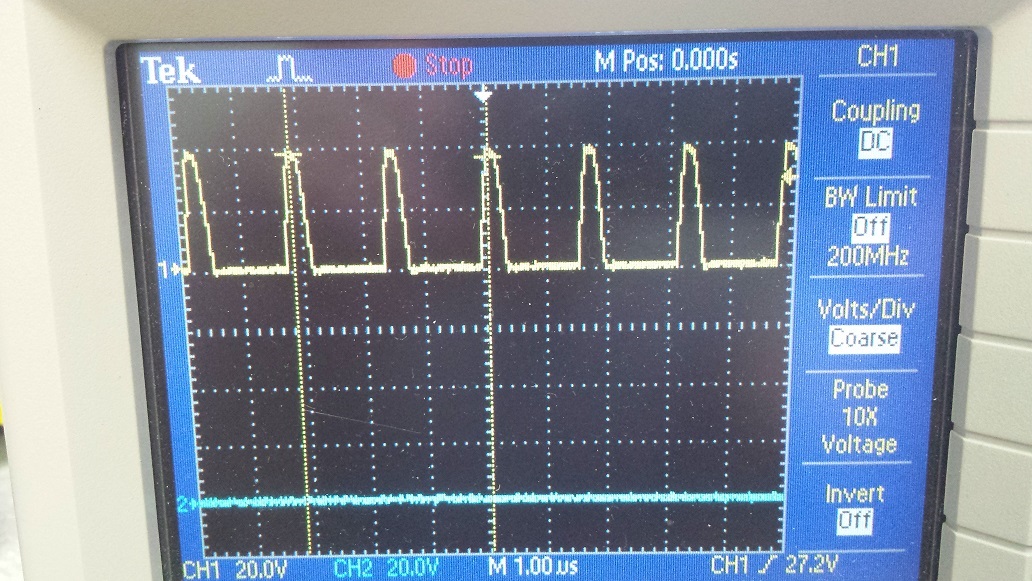We are using this driver in stand alone mode to drive sharp LS037V7DW05 display backlight. Device is rated at 60C and we are seeing intermittent backlight shutdowns at 60C with Driver reporting overcurrent condition.
Usually problem goes away at low temperature. However i have a board where LP8543 reports overcurrent immediately upon startup. We are trying to determine if LP8543 is damaged.
VPROG[4:0] is 0 indicating Vout is at 10V.
input is dual cell lithium so 8.4V. I measure at around 8V at J10 during fault.
Current select is 0x55 (20mA)
Fault register 0x02 indicates 0x0C driver is on and overcurrent. If i disconnect the display I get 0x08
bad unit also shows 38V with no display connected. A good unit shows around 30V with no display connected.
I first though that Shottky was blown, as it is clearly inadequately specified. However, even after replacing with a new one, problem still remains.
Switching works with no load, I see the switching waveform across the shottky. This is not a configuration issue as most devices work up to 40C.
Is the part damaged?





